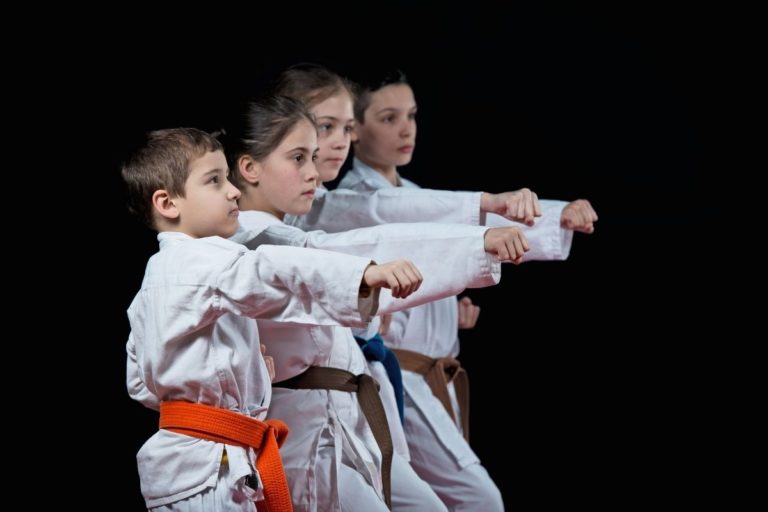What is Tricking Martial Arts? (Fully Explained)
If you start exploring beyond the well-known martial arts, you will come across various unique concepts like tricking, one of the most unique martial arts humans have come up with. You haven’t heard about it yet? That’s fine, you are about to learn everything about it.
Tricking is a mix of martial art techniques from Wushu, Taekwondo, Capoeira, and gymnastic and dancing moves. It is an aesthetic display of creative combos of flashy tricks that are also very hard to learn and execute the right way. You know tricking is hard when you see that triple backflips and double side flips are listed as “basic” techniques.
Keep reading this article to learn more about the history of tricking, techniques, and whether it works in real life or not.
History of tricking
The story of the tricking movement begins in the 1960s and martial arts like Wushu, Capoeira, and Taekwondo. This was a time when these combat systems started to put more emphasis on “flashy” moves like spinning, jumping, and flying kicks. In the following years, they would increase the difficulty by mixing these techniques with gymnastics flips and twists and dancing moves to create even more unique and dynamic combos.
One of the things that put “tricking” on the map was the rise of martial arts movies in the 70s and 80s. These movies used to be very popular mainly because of all the cool “tricks” that visually looked amazing. All of a sudden, every kid wanted to learn spinning jump kicks, backflips, and all other great tricks.
Tricking movement exploded in the 90s with the famous group called “West Coast Next Generation Team”. This was a group of trained athletes from various martial arts led by the group leader, Ernie Reyes. The entire emphasis of their work was on eye-catching flashy moves that quickly became a part of pop culture. You could see trickers performing in movies, music videos, or half-time shows in other sports.
In some way, Next Generation Team set an outline for what would later become known as “tricking”. But the project that would put this new movement on the map was the brand called “Xtreme Martial Arts (XMA)”. XMA gave the world a new form/style as an advanced mix of martial arts and flips and somersaults from gymnastics.
Over the years, tricking has evolved a lot and in this day and age, there are different forms and styles. But above all, the movement is more than present and rapidly growing all across the world.
Concept and techniques
Tricking is one of the most versatile martial art concepts as it includes hundreds of different tricks. Things go to another level when you realize that one of the main ideas is to always come up with new tricks, or better variations of the existing ones. Learning never stops, and in some way, it’s almost impossible to learn all the tricks.
This constant evolution is what makes this discipline so unique, and in the end, hard to master. People are always pushing the boundaries of what is possible, setting the bar higher and higher for each trick. This is why each of the tricks listed below has dozens of different variations.
Novice Tricks
- Aerial twists
- Backside flips
- Spinning kicks
- Jumping roundhouse kicks
Beginner tricks
- Back and front flips
- Cheat 360/720/ 900 kicks
- Flashy and illusion kicks
- Shuriken moves
Intermediate tricks
- Corkscrew tricks (similar to the ones in capoeira)
- Grandmaster swipe
- Stall back flip
Advanced tricks
include around 20 different variations of boxcutter and grazier tricks.
Expert tricks
are very, very hard to master. In fact, these tricks are so difficult that there are only five variations of the popular “snapuswipe” trick, and a bullet flip.
What is the main goal in tricking and why do people do it?
First of all, tricking is not a system like boxing that you can apply in a real fight on the streets. Also, it is not a discipline people train in to win titles, money, or global fame.
Tricking is all about the reward you get when you perfectly execute a cool trick you have been working on for months. Turning years of hard work into 2 seconds of flying through the air and doing what’s considered to be impossible is what most trickers live for. It is an addictive cocktail of adrenalin and dopamine that makes you feel happy and awake at night for days.
“The sky’s the limit, that’s the most appealing part of tricking. When I can show the result of my blood, sweat and tears, I feel true happiness”– Ingun “Kick Gun” Yoo (source)
Since there is no money or fame involved, tricking is a pure battle between you and your physical and mental abilities versus the trick you want to do. Your job is to find a unique and creative way to do it, make a plan, and work hard towards it. There’s nothing better than a feeling when you execute it just how you wanted to. It’s like a drug, you just want more of it.
People push their minds and bodies over the limits in an attempt to achieve something that hasn’t been done before or is very, very hard to do. To achieve this, they have to be creative, feel free to explore new things, not be afraid to pioneer new moves, and take risks.
Trickers are dedicating their lives to master balance, weight distribution, coordination, and many other aspects just to do one specific move.
Is tricking hard to learn?
Achieving a high level of skill in tricking is very, very hard. In fact, it might be even harder than in most other forms of combat due to a large number of tricks. On top of that, most tricks are so hard to execute that a lot of people never reach advanced levels.
Doing all sorts of flips, 540 spinning kicks and other flashy moves require a high level of athleticism, coordination, and body awareness. That’s why all trickers are top-level athletes, very strong, flexible, and agile. To be able to perform at the top level, they have to maintain a healthy lifestyle, and always work on improving their fitness.
In the end, each tricker has their own style based on their weight, height, talent, focus, coordination, and many other things. For example, some people may struggle to do tricks on the inverted axis, while others may struggle with the ones on the horizontal axis.
How to start tricking?
Most people switch over to tricking from Taekwondo, Wushu, or Capoeira. Some of them might also be trained in breakdancing, other forms of dancing, or even parkour. All of these sports represent a good base because athletes utilize similar skills and movements.
But bear in mind that most trickers are self-taught and prefer to train alone in the park or with other trickers. There are no coaches, state of the art gyms, or any of that. It all truly depends on your dedication, passion, and the amount of work you are putting into every trick. But what about the people without any martial art background?
Most people start by doing some basic tricks according to their abilities. Once they master the basics, get stronger and more flexible, the next step is to move on to more difficult tricks. How much does it take to go from a total amateur to the advanced level is an individual thing. As in any other sport, some people are more gifted than others, or simply have more time to train.
One thing is for sure, you have to approach it slowly, stay patient, humble, and avoid taking huge risks. The last thing you need is a bad injury that might end your tricking career or put you on the sidelines for months or even years.
Can you use tricking in a real fight?
No, tricking won’t train you for any type of real combat, neither the tricks you learn are very practical in a fight. The entire concept differs a lot from other martial arts like boxing or Muay Thai where the entire emphasis is on preparing you for real combat.
Tricking is all about the demonstration of acrobatic tricks that may look effective in movies, but won’t help you much in a self-defense scenario. Most of the moves take a lot of time and energy to execute, a time the opponent might use to fight back and hurt you. It is simple, tricking trains you to do tricks, not to fight. But on the other side, it’s always better to know something than nothing, right?
No one can deny that trickers know how to kick, and are capable of hitting a stationary target using basic strikes. They are also very strong, athletic, agile, and have solid movement. This is more than enough for you to deal with an average person not trained in martial arts who is also similar in size. But it would be foolish to even think that trickers can fight against trained martial artists.






